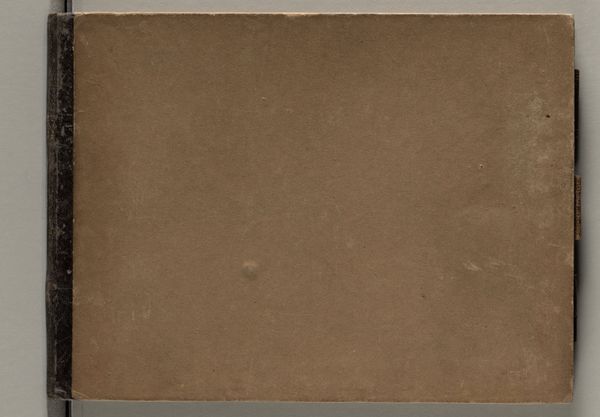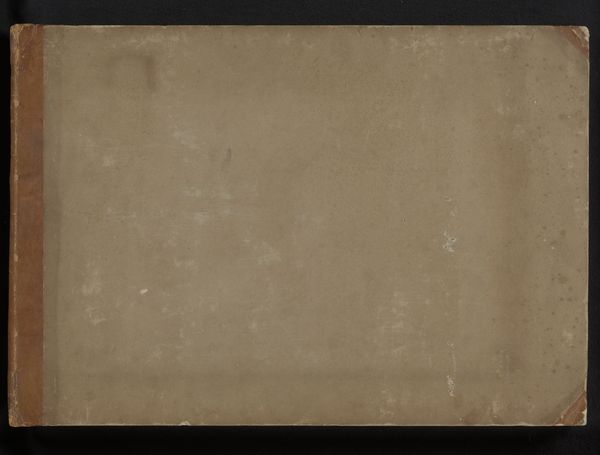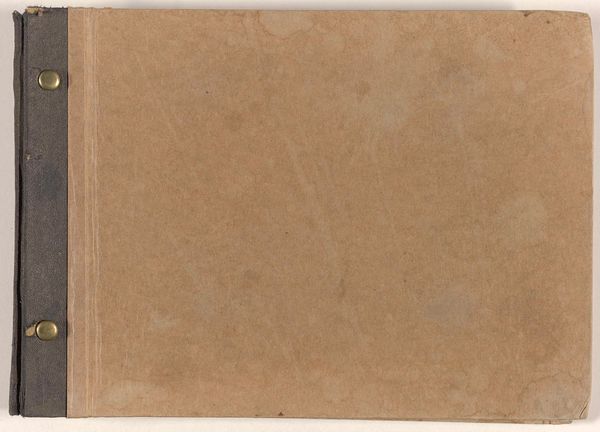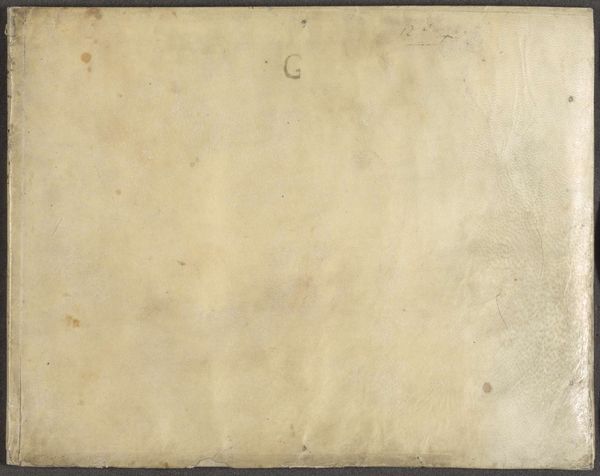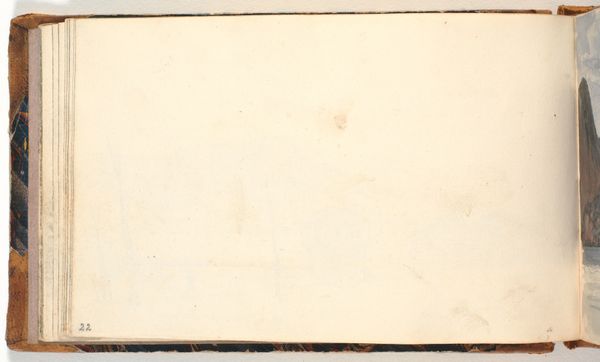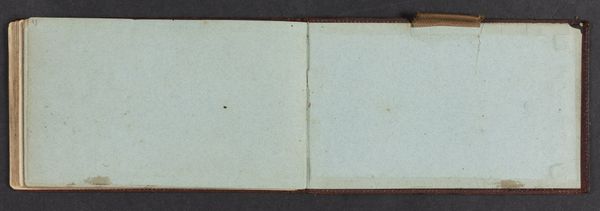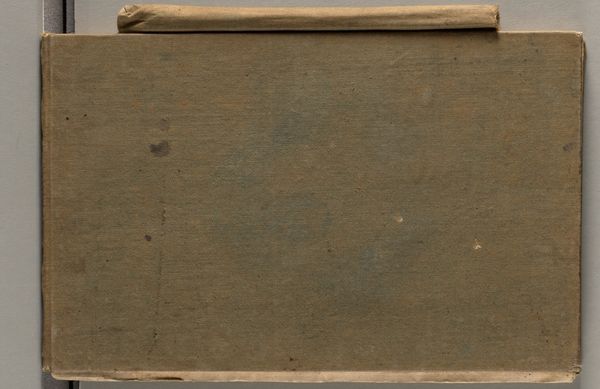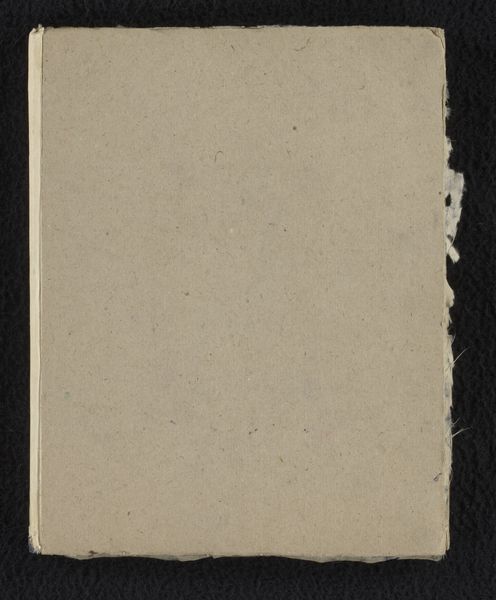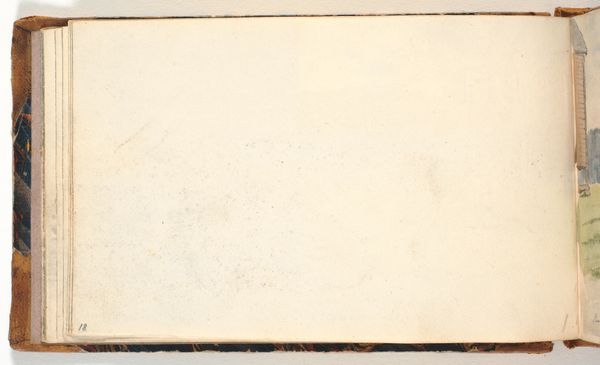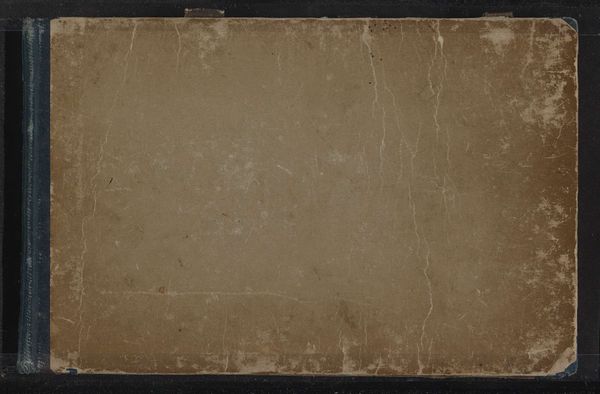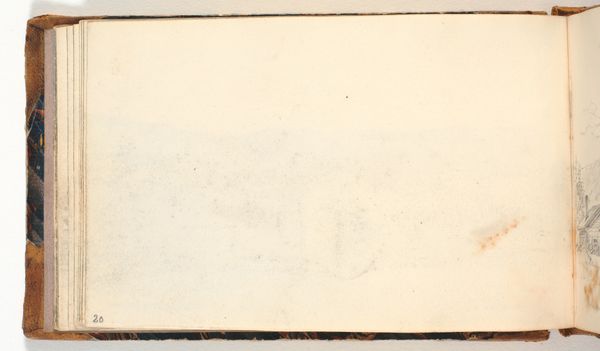
drawing, paper, ink, pencil
#
drawing
#
aged paper
#
homemade paper
#
16_19th-century
#
paper non-digital material
#
sketch book
#
paper texture
#
paper
#
personal sketchbook
#
ink
#
german
#
romanticism
#
pencil
#
folded paper
#
watercolour bleed
#
genre-painting
#
sketchbook art
#
watercolor
Copyright: Public Domain
Karl Peter Burnitz, born in 1824, created this sketchbook—a silent witness to the shifting cultural and artistic landscapes of 19th-century Europe. Bound in simple brown paper, this object invites a kind of intimacy. As we contemplate the traces of the artist’s hand, we might reflect on the era in which Burnitz lived. The 1800s were a time of revolution, industrialization, and burgeoning nationalism. These historical forces shaped individual identities, artistic expression, and the very fabric of society. What sketches, what dreams, what observations did this book hold? Its blank cover serves as a reminder of the countless untold stories and perspectives that remain hidden within its pages. It compels us to consider the complex interplay of personal experience and broader social narratives that influence the creation of art. This sketchbook represents the artist's journey.
Comments
stadelmuseum almost 2 years ago
⋮
Peter Burnitz drew mainly medieval half-timbered houses, churches and castles as well as tree studies in the tradition of Jakob Philipp Hackert with pencil into this undated sketchbook. He gave the carefully executed drawings a three-dimensionality by using very regular, fine strokes. Sometimes he worked out some parts with hatching, while the rest of the drawing was done only in contours. Two of his paintings, the studies of a castle and a church ruin, he also coloured with a brush in light brown and grey-blue.Presumably, at least a part of the drawings was made after other drawings. The first indication of this is the coloured, rather sober view of a small, one-nave sacred building with a tower ruin on sheet 15 recto, which is done nearly identically in sketchbook SG 2366 (see there sheet 20 recto). The two drawings, which focus on the building – here realised comparatively comprehensively, there only sketched out in part – correspond so precisely with one another that Burnitz can hardly have drawn them from nature, let alone with a time lag. It is more likely that he worked from a master model or copied his own drawing. However, there are no signs of tracing in either of the two drawings. A further clue is provided by the study of a gnarled tree trunk on sheet 10 recto, which astonishes with its striking similarity to a drawing by the artist colleague Carl Theodor Reiffenstein from 1839 (see Inv. 7631, Städel Museum). Here, too, one can only assume that both would have drawn from the same design or from each other. The latter would at least be possible, since both the 15-year-old Burnitz and Reiffenstein, four years his senior, lived in Frankfurt in 1839. Basically, the very precise, concentrated strokes of Burnitz’s drawings in this sketchbook seem to speak against working outdoors. This is certainly true of the two delicate, almost composed sections of landscape towards the end of the sketchbook, which can hardly be based on nature (sheets 18 recto and 20 recto). Finally, the uncertain perspectives that characterise some of his drawings in the early sketchbooks, which were created from nature, cannot be observed here ‒ speaking for the assumption that he worked from models in this case.For a full sketchbook description, please see “Research”.
Join the conversation
Join millions of artists and users on Artera today and experience the ultimate creative platform.

